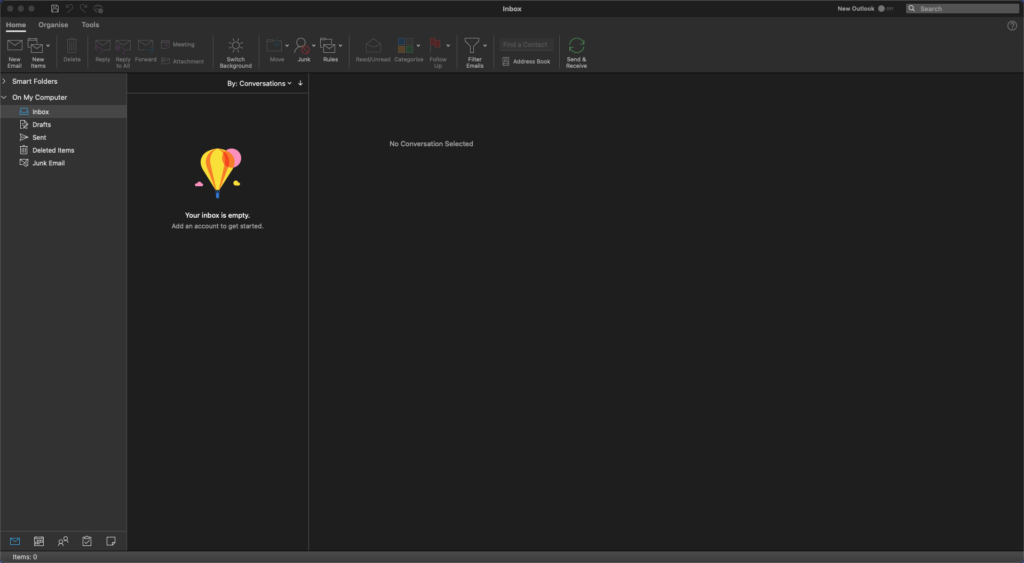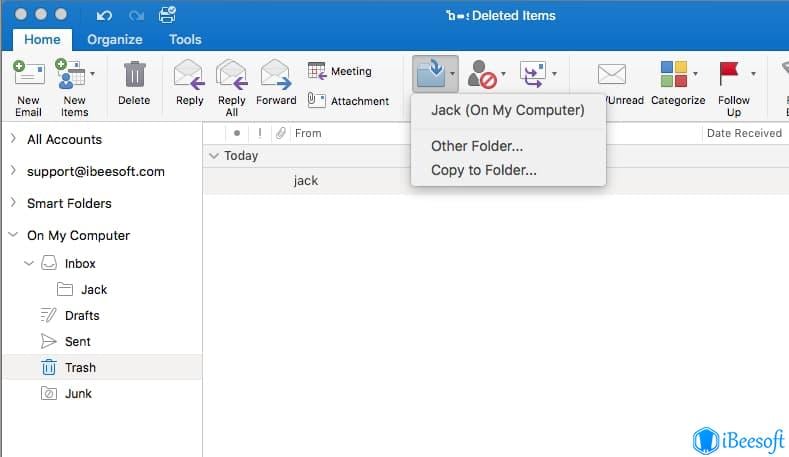
#OUTLOOK FOR MAC TRASH VS DELETED HOW TO#
External hard drive backups (check out this ZDNet article on how to wipe your hard drives)Ĭomplying with PCI DSS regulations to “securely delete”A lot of companies believe they’re compliant with PCI DSS Requirement 3.1 because they’ve put files that contain PAN (Primary Account Number) data into their digital trashcan.Don’t forget about backupsWhen thinking about how to permanently delete files off your network, don’t forget about any archived data, including: Don’t forget that either the sender still has a copy of the email, or you still have a copy of the email in your sent folder.

If you’re worried about email recovery, some email systems like Outlook have an option that allows you to disable any recovery of deleted emails. Most have some sort of ‘delete forever’ option that allows you to select the emails in the trash folder for permanently deletion. Some email programs automatically delete trashed emails after a certain time has passed, but some keep emails until you run out of space.

If you send an email to the trash, it’s likely not actually deleted. Using Secure Empty Trash, or programs like CCleaner take a lot longer to complete the emptying process than just selecting Empty Trash because the computer is actually writing over the files you want deleted, instead of just marking them as ‘ready to overwrite.’ĭon’t forget about emailTalking about a secure email deletion processes is more difficult because each email program is unique. (Windows) Use a third party wiping program, like CCleaner or Eraser (Eraser can also cleanse unallocated disk space).
#OUTLOOK FOR MAC TRASH VS DELETED DOWNLOAD#
How do you permanently delete files from your computer? The only true ways (besides the computer automatically writing over the disk space when you download a new application) are:

For those with advanced computer skills (such as hackers), that data is still accessible by looking at the unallocated disk space. Your computer can’t find that file for you anymore, but the file still exists. For the average user, those files are nearly impossible to retrieve because the operating system deletes the references to the file. It simply marks the file as acceptable to overwrite. When you Empty the Recycle Bin or Empty Trash, it doesn’t actually wipe the file(s) off your computer. While a little more difficult and smelly to retrieve, the point is. In our desk trashcan example, even if the night cleaning crew empties your trashcan into the dumpster out back, you could go dumpster diving to find that document again, if it was important. SEE ALSO: Secure Data Deletion: Permanently Deleting PHI in Healthcare Specifically, in the case of credit cards, the Payment Card Industry Data Security Standard reminds, “If not securely deleted, this data could remain hidden on merchant systems, and malicious individuals who obtain access to this information could use it to produce counterfeit payment cards, and/or to perform fraudulent transactions.” I hope to clear up some common misconceptions about “delete” button permanence. Whew! All taken care of! Or, is it?If you delete sensitive information (like patient health records, unencrypted credit card numbers, Social Security Numbers, etc.) on your computer, guess what? They’re still there! If an attacker manages to find a way into your network, he can still access that deleted info. After quickly sending that data to my computer’s recycle bin, I breathe a sigh of relief. Say I find hundreds or thousands of unencrypted credit card numbers stored by accident on my business network. When delete doesn’t actually delete, it can increase your vulnerability.


 0 kommentar(er)
0 kommentar(er)
